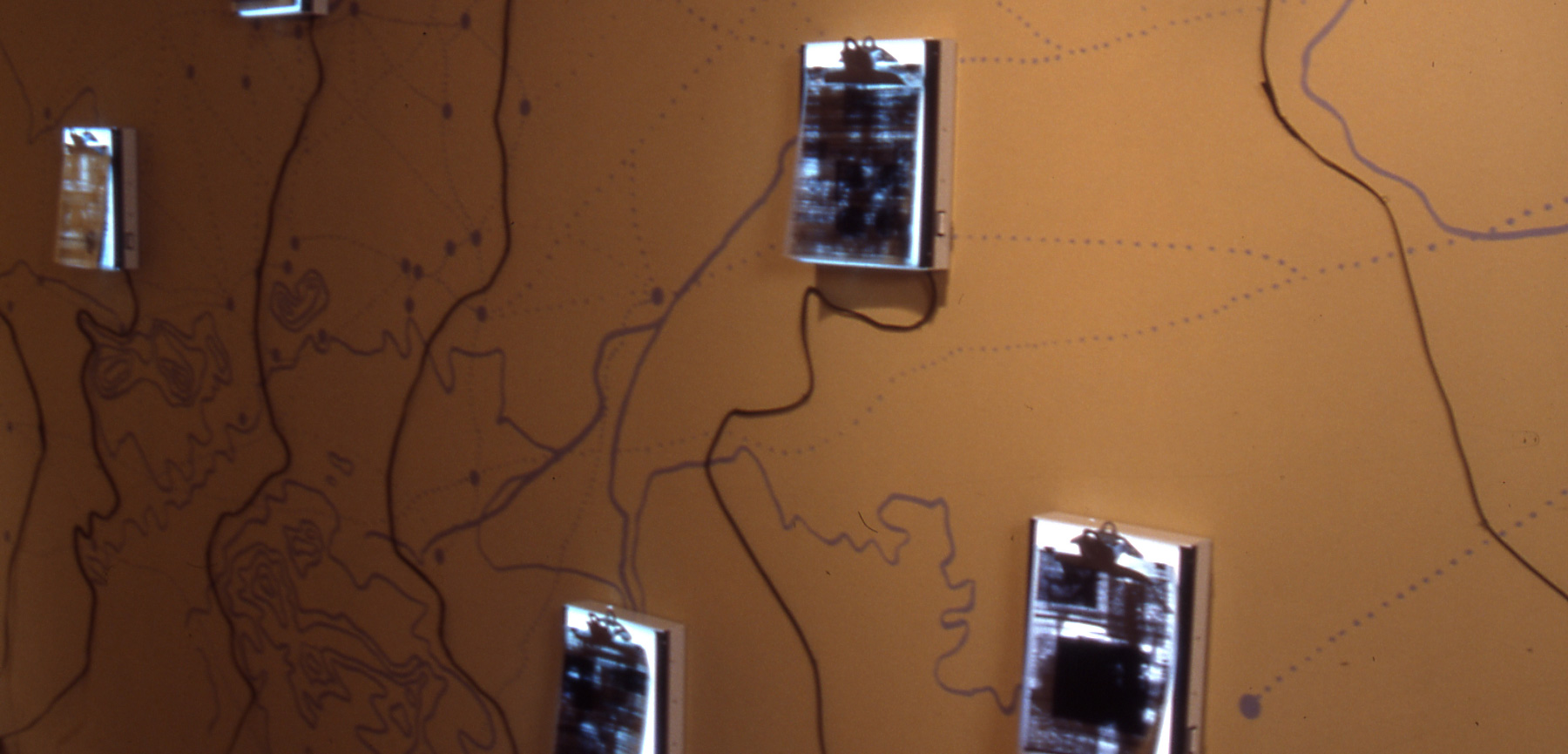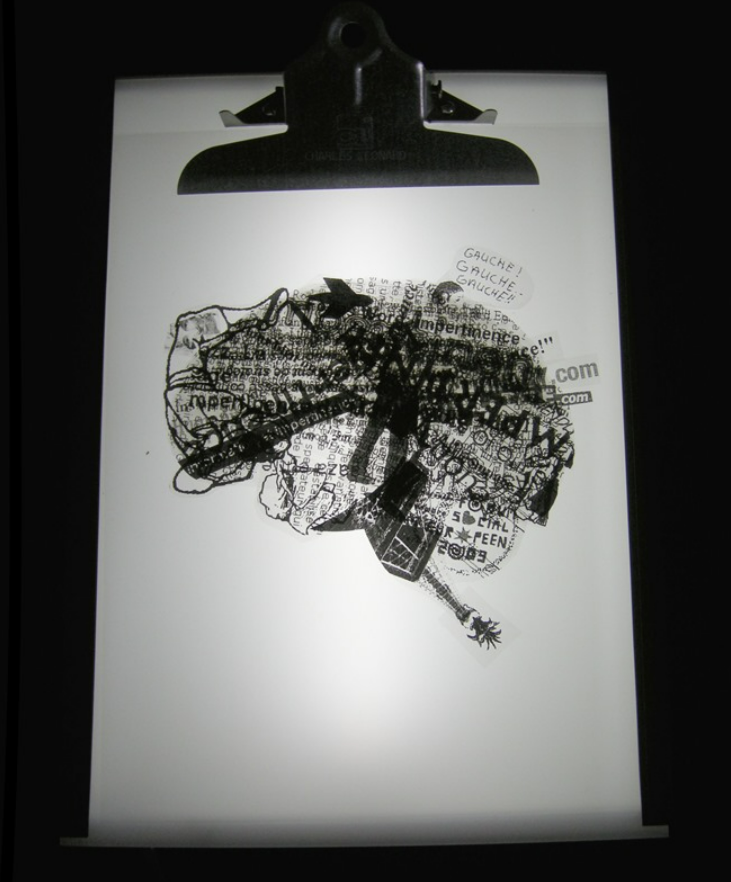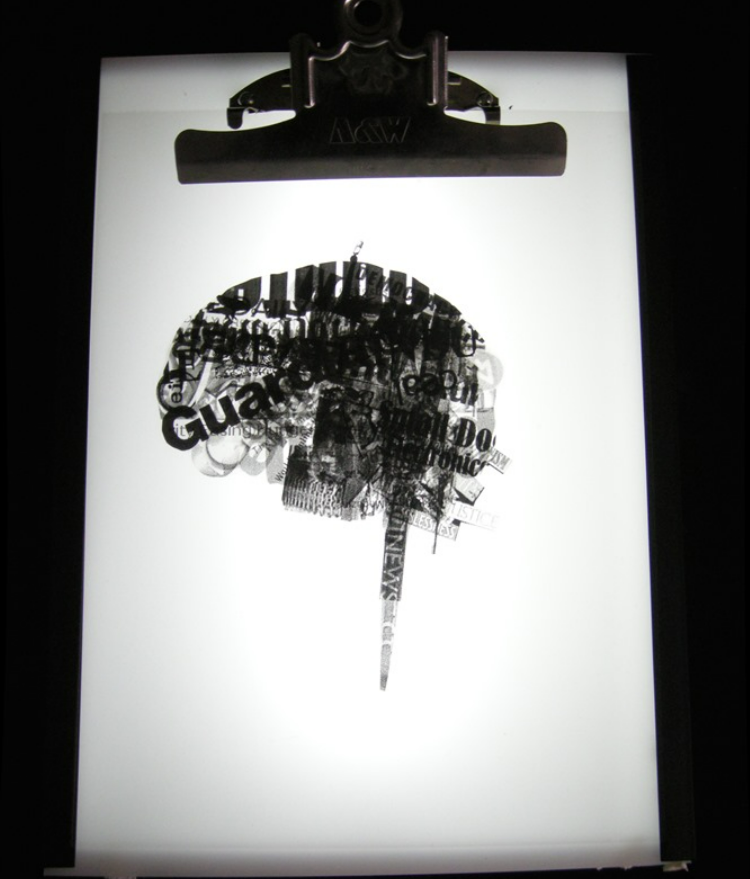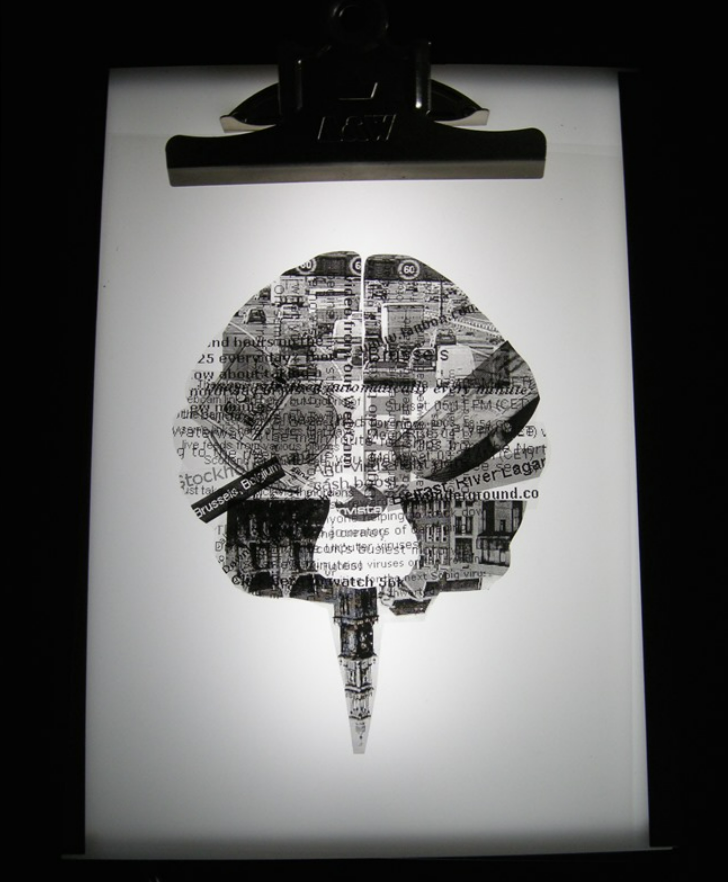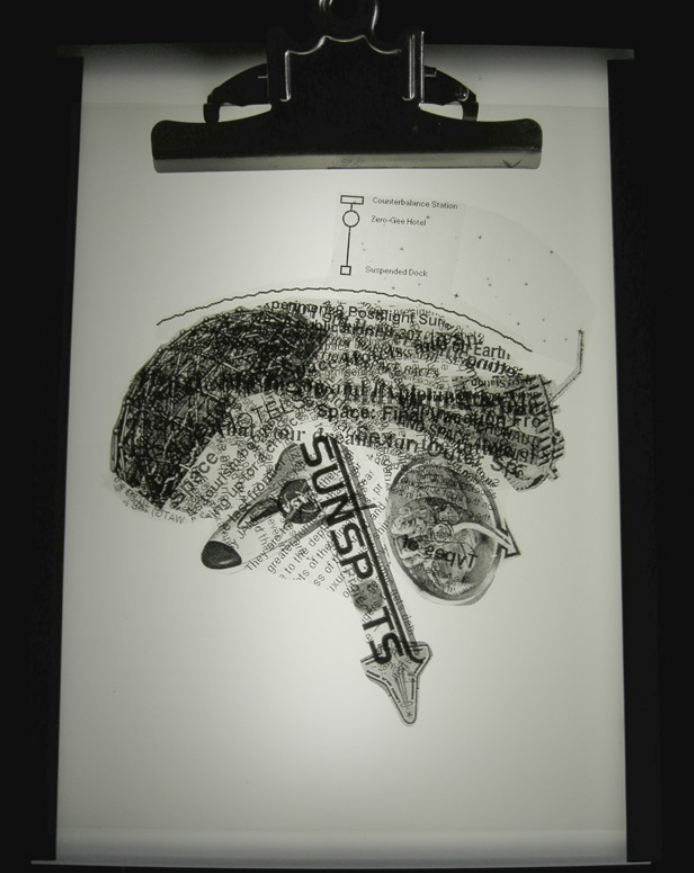Transhumance, 2003
multimedia installation
Music: Jim Staley and Ikue Mori
Art In General Artist in Residence 2003
Read review by Trebor Scholz
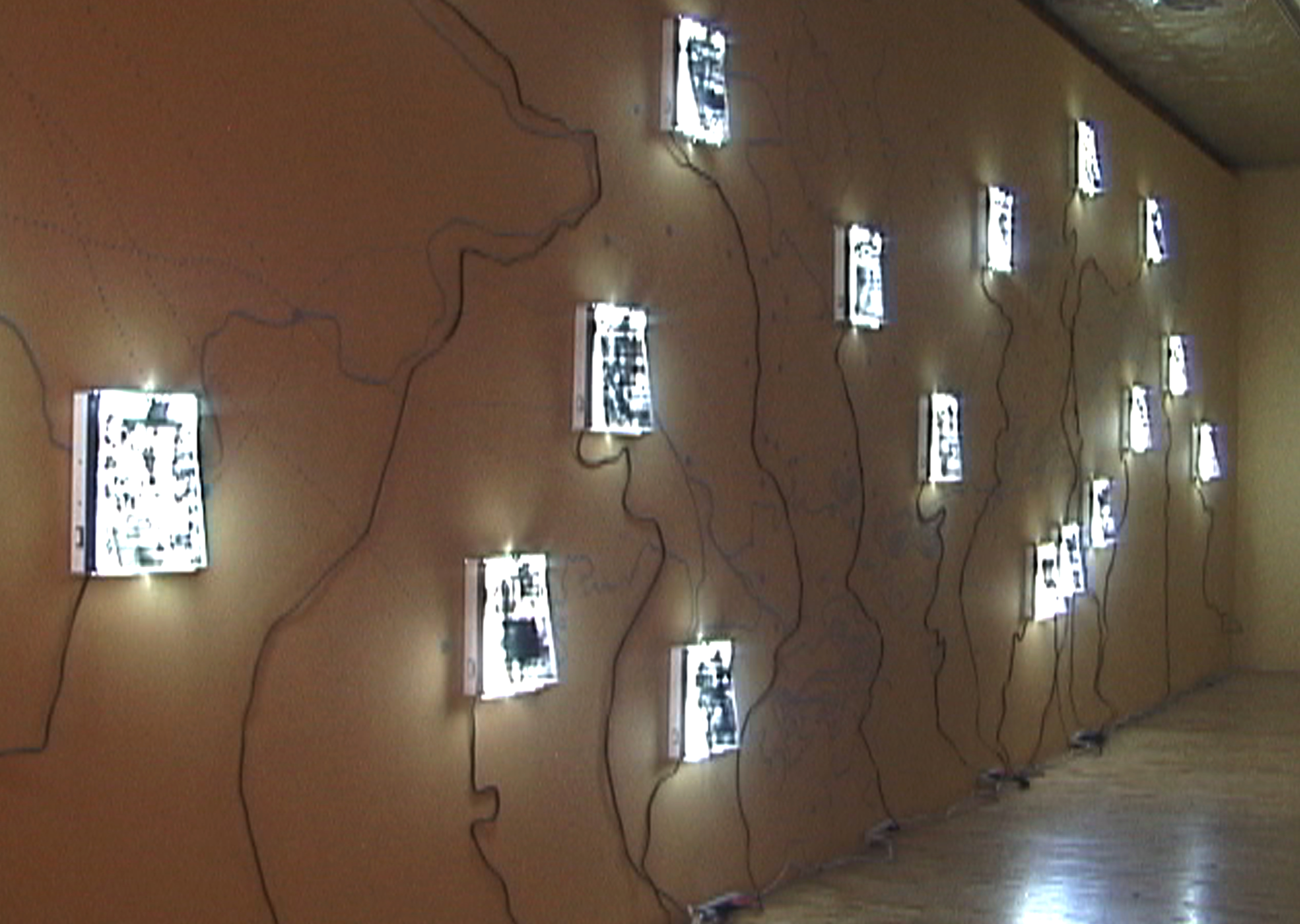
For the duration of a two-month art residency at Art in General, the artist inhabited the gallery space inside a semi-transparent tent allowing visitors to interact with the artist in process.
A map of an ancient nomadic route in the Sahara was painted on the wall. New media theorists and artists were requested to submit a 24-hour internet journey. The artist followed their paths of 20-25 URLs and gathered souvenirs in the form of image and text. The travel ephemera were printed on transparencies and exhibited as data x-rays along the paths of a nomadic map painted on the wall. Projected on the tent were animations of cerebral paths as well as footage of the artist’s travels in physical space.
Is there such a thing as ‘a nomadic brain neuron’? In Transhumance, Eng searches for a cerebral pattern that suggests that particular tribes view the world with an infinite horizon. Using projected video, ‘data x-rays’ of internet journeys and the nomadic tent architecture, Transhumance parallels the survival of the ancient nomadic tribe with the digerati’s constant search for new territory.
As contemporary societies become immersed in technology-dependent lifestyles, subcultures adopt patterns of behavior reminiscent of primitive nomadic people. For the digerati (those who find comfort within cyberspace), their desire for temporal mobility within a borderless community is akin to the African desert nomad. The survival of the Tuareg of the Sahara is based upon continuous movement in an open environment. To an anthropologist the two groups would be in opposite categories: the sedentary and the nomadic. For the ethnoscientist however, the psychology of the cyborg in his digital environment is analogous to the Tuareg’s peripatetic existence; survival is dependent upon constant interaction with new horizons.
A forward momentum is maintained through cinematic environments. Video is a gateway to moving pictures that represent both the real and the imaginary. When modern Western life becomes too confined to one place, frame by frame one is transported to another realm. The rectangular projection of the image, similar to the window, becomes a divider. Interaction with an endless horizon is constructed with tools of convenience. The camera lens is the extension of the analytical eye. With delicate scrutiny it captures the subtleties of everyday existence. It is always some kind of journey. In the video the witness may recognize a place or object, however the path is never quite the same where chance and chaos is an integral part of a nomadic environment.
Architectonics define how we experience the world. For nomads the tent is a symbol of mobility and freedom. The shape of our homes reflects the shape of our minds. The transformation of objects into moving pictures is projected onto collapsible structures. A video tent constructed as to move through space reflects the projected images that move through time. Within this sanctuary another world is mapped out, exploiting the freedom that new media allows in a place that welcomes the nomad again.
The Art in General Artist Residency was made possible by the Andy Warhol Foundation for the Visual Arts, the National Endowment for the Arts, the Greenwall Foundation, general operating support of Art in General, and in-kind donations from mediaThe foundation inc.
Special thanks to Vidvox for use of their live video software, Jim Staley and Ikue Mori for use of their music, and to the new media theorists and artists who submitted an on-line journey.( Mark Amerika, Kestutis Andrasiunas, Guy Van Belle, Blackhawk, Jonah Brucker-Cohen, David Crawford, Ricardo Dominguez, Jo-Anne Greene, Jason Johnson (Future Cities Lab), Tina La Porta, Diane Ludin, Mari Kretz, Dr. Jeff Lewis, Marcus Neustetter, Helen Thorington, Rich Streitmatter-Tran, , and Charles Lim Yi Yong.


